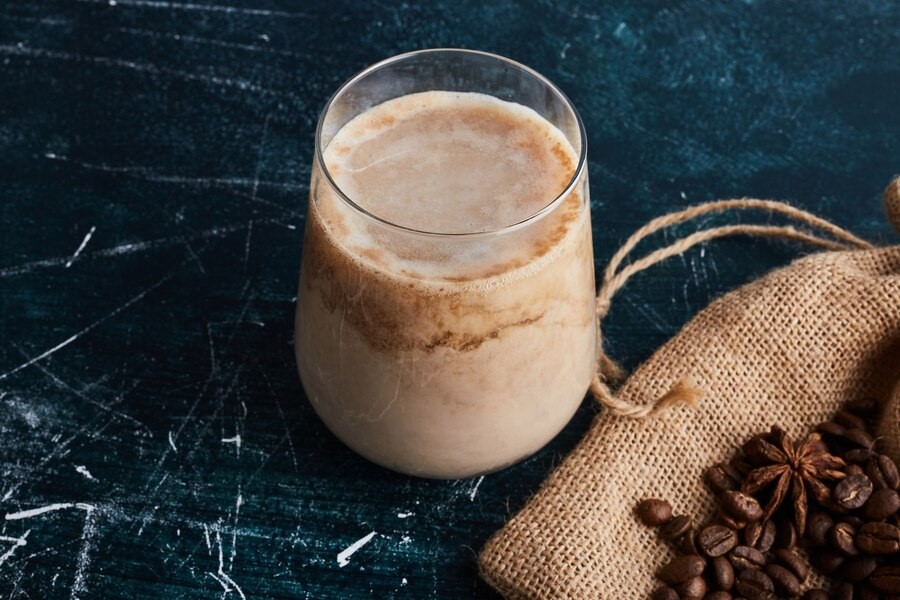Latte art is an art technique in serving latte coffee where the barista pours frothed milk over the espresso, forming certain patterns or designs on the surface of the drink. The technique involves skill in manipulating the flow of milk to create beautiful images, such as hearts, leaves, or other shapes. Latte art adds aesthetic value to coffee drinks and is a major attraction at many specialist coffee shops.
Basic Techniques
To make latte art, baristas need to master some basic techniques. Here are the basic steps to make latte art:
- Prepare a Good Espresso
Start by serving the perfect espresso. A good espresso is the foundation of a latte drink.
- Make Milk Frothy
Heat the milk to the right temperature and create a milk foam with a smooth and thick texture. This technique involves swirling the milk with hot steam from an espresso machine.
- Maintain the Right Foam Texture
Frothed milk should have a texture that is thick enough to hold its shape when poured, but also smooth enough to create detail in latte art.
- Choose the Right Tool
Use a mold (pitcher) to make latte art. This tool helps baristas control the direction and amount of milk poured.
- Basic Pattern
Learn basic patterns such as hearts or rosettes. The heart is a common pattern and is a good place to start for beginners.
- Hand Movement Mastery
Latte art involves smooth and controlled hand movements while pouring milk into the espresso. Baristas should practice these movements regularly to improve their skills.
- Consistent Exercise
Like many artistic skills, latte art requires consistent practice. Baristas must constantly practice to improve precision and creativity in creating beautiful latte art designs.
Materials to Prepare
Latte art not only involves the barista’s skill in filling the espresso with milk, but also involves choosing the right materials to create a beautiful and long-lasting design. Here are some of the materials that support latte art:
1. Kopi Berkualitas Tinggi
Start with a high-quality espresso. Fresh, well-brewed beans provide the perfect foundation for latte art. Choose quality coffee beans that have a complex and balanced flavor.
2. High Quality Milk
Choose fresh milk with sufficient fat content to provide the appropriate smoothness and texture for latte art. Fresh milk will produce better foam and allow the latte art design to be more visible.
3. Milk Pouring Tool (Steam Wand)
This tool is essential for creating the perfect milk foam. Make sure the steam wand on your espresso machine is in good working order and clean of any previous milk residue.
4. Teko (Pitcher) Latte Art
Use a specialty latte art pitcher with a pointed tip and narrow neck. The design of this pitcher makes it easy for baristas to control the flow of milk with precision, allowing for the formation of fine, detailed patterns.
5. Termometer
The use of a thermometer is key to ensuring the perfect milk temperature when pouring. The ideal milk temperature for latte art is usually in the range of 60-70 degrees Celsius.
6. Praktek dan Kreativitas
Besides the physical ingredients, creativity and practice are the invisible ingredients that are very important. Creative baristas can create unique and enticing latte art designs with their creative thinking. Consistent practice helps hone skills and precision in creating latte art designs.
7. Natural Dyes (Optional)
Some baristas use natural colorants such as matcha powder (Japanese green tea) or cocoa powder to add color and dimension to the latte art design. The use of colorants should be judicious and minimal to preserve the flavor of the drink.
Innovations in the World of Latte Art
Innovation continues to drive the development of latte art. New techniques and specialized tools have been introduced, allowing baristas to create more complex and creative latte art designs. Here are some new and innovative techniques in latte art:
1. Latte Printer
A special printing machine has been designed to print complex images or designs on the milk foam layer on top of the espresso. This enables the printing of highly detailed and intricate images that are difficult to achieve by human hand.
2. Latte Art Stencils
The custom stencils are designed with a variety of motifs, from celebrity faces to geometric shapes. Baristas can place the stencil over the cup and sprinkle chocolate powder or cinnamon powder to create a precise image.
3. Latte Art Pen
A precision pen tool with a very fine tip allows baristas to create very small and intricate details on latte art. With this pen, they can draw thin lines, create eye details, or add subtle accents to the design.
4. Latte Art 3D
This technique involves shaping the milk foam in a three-dimensional form, creating raised images of the surface of the drink. It requires great skill and experience to create a real three-dimensional effect.
5. Latte Art Augmented Reality (AR)
Some cafes use augmented reality technology to serve interactive latte art. When customers scan their drinks with a special app, the latte art design comes to life, moves, or even interacts with the user.
6. Teknik Fluid Painting
This technique involves using liquids such as food coloring to create an aquarel or paint spill effect on latte art. This gives the drink an artistic and organic look.
With the introduction of advanced technology and specialized tools, latte art has stepped up to a higher level in terms of creativity and design complexity. These innovations continue to open up new opportunities for baristas to explore latte art in unprecedented ways.








